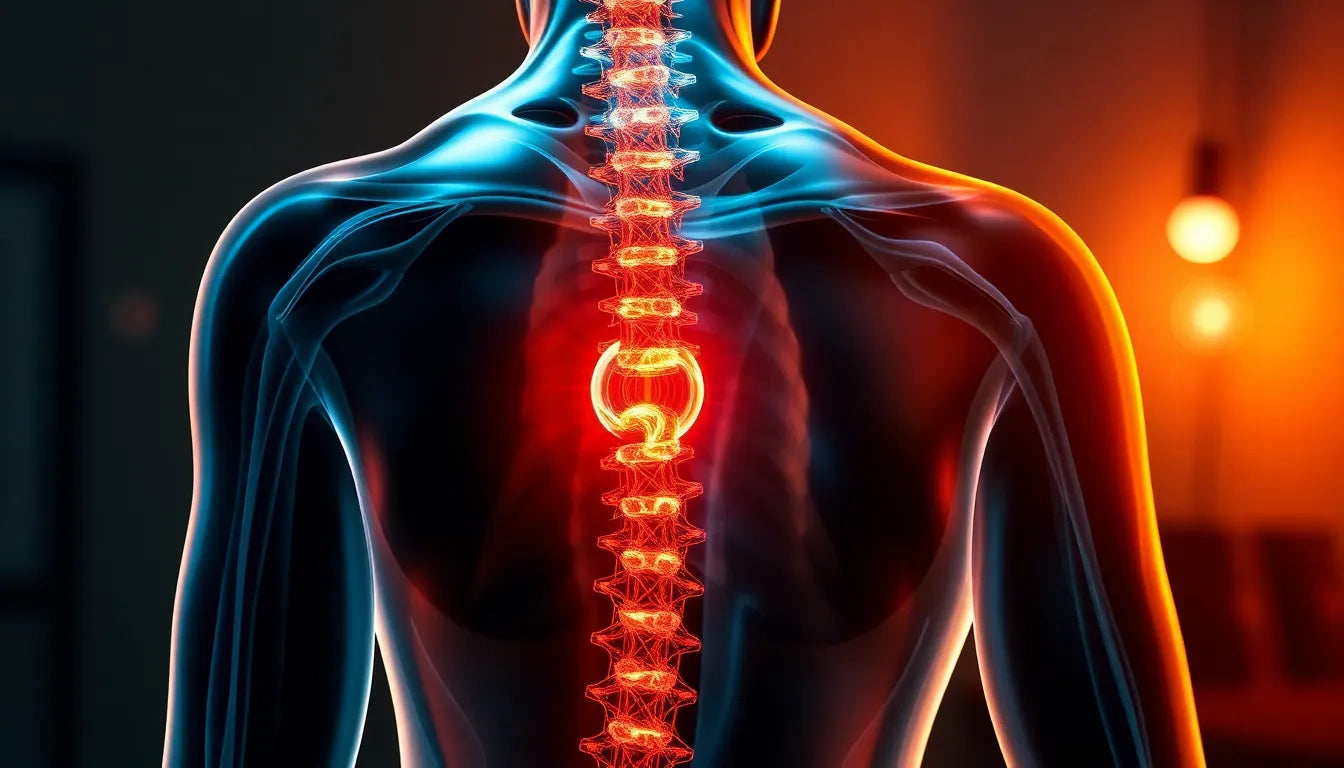For individuals grappling with a herniated disc and sciatica, the quest for a comfortable night's sleep can often feel elusive. These conditions not only cause significant discomfort during waking hours but also pose unique challenges when it comes to finding a restful sleeping position. Quality sleep is crucial for managing pain and promoting overall health, making it essential to explore effective solutions that can provide relief and improve sleep quality.
understanding herniated disc and sciatica
A herniated disc occurs when the soft inner gel of a spinal disc pushes through a tear in its outer layer, often leading to nerve irritation. When this condition affects the lower back, it can result in sciatica, a type of pain that radiates along the sciatic nerve, which extends from the lower back down each leg. Symptoms include sharp pain, tingling, and numbness, which can significantly disrupt sleep and necessitate specific strategies to alleviate discomfort.
purpose of this post
This post aims to provide practical advice on sleep positions that can help reduce pain and improve sleep quality for those suffering from herniated discs and sciatica. By understanding and implementing the right sleeping positions, individuals can find relief and enhance their overall well-being. The following sections will delve into specific positions that promote spinal alignment and comfort, offering actionable solutions to help you achieve a more restful night's sleep.
best sleeping positions for herniated disc and sciatica relief
Finding the right sleeping position can be transformative for those dealing with a herniated disc and sciatica. By adopting positions that support spinal alignment and reduce pressure on the affected areas, individuals can significantly improve their sleep quality and manage pain more effectively. Here are some recommended sleeping positions:
back sleeping with a pillow under the knees
Back sleeping is highly recommended for individuals with a herniated disc and sciatica. This position helps maintain the spine's natural curvature and distributes body weight evenly, reducing pressure on the herniated disc and sciatic nerve. To enhance comfort and provide additional support, place a pillow under your knees. This adjustment helps keep the spine in a neutral position, alleviates tension, and can minimize discomfort during the night.
side sleeping with a pillow between the knees
Side sleeping can be particularly beneficial for those experiencing sciatica pain. By lying on your side, you help align the spine, which can relieve pressure on the sciatic nerve. It's advisable to sleep on the non-painful side and place a pillow between your knees. This technique prevents the upper leg from pulling the spine out of alignment, further reducing strain and promoting a more restful sleep.
fetal position for lumbar herniated discs
The fetal position, where you curl up with your knees drawn towards your chest, can be especially effective for lumbar herniated discs. This position opens up the spaces between the vertebrae, easing nerve tension and providing relief. Ensure your neck is supported with a pillow that maintains alignment with your spine, which can prevent additional strain.
reclined or semi-fowler’s position
For those who experience significant discomfort lying flat, a reclined or semi-Fowler’s position might be beneficial. Elevating the upper body using a wedge pillow or an adjustable bed can decrease lower back pressure. This position allows gravity to assist in reducing stress on the spine and can be particularly soothing for those with severe pain.
sleep positions to avoid and modifications
While some positions can alleviate pain, others may exacerbate it. Stomach sleeping, for instance, is generally discouraged as it can misalign the spine and increase strain on the neck and back. If you find it difficult to avoid stomach sleeping, consider placing a pillow under your hips to help maintain a more neutral spine position. Additionally, using a thin pillow for your head can reduce neck strain.
additional pain management tips for better sleep
Beyond choosing the right sleeping position, several other strategies can help manage pain and improve sleep quality:
- Supporting pillows or rolled-up towels: For side sleepers, placing a towel under the lower back or waist can provide extra support. If the herniation is in the cervical region, ensure your neck is adequately supported with a suitable pillow.
- Maintaining spinal alignment when sitting: Consider using lumbar support or ergonomic seating to maintain proper posture throughout the day, which can complement your nighttime efforts.
- Pillow choice and mattress consideration: The firmness and height of your pillow can significantly impact comfort. A firmer mattress may provide better spinal support, helping to maintain alignment and reduce pain.
By experimenting with these sleep positions and incorporating supportive aids, individuals with a herniated disc and sciatica can find much-needed relief and enhance their overall sleep quality. Remember, if pain persists despite these adjustments, consulting with a healthcare professional is advisable to explore further treatment options.
lifestyle and long-term care for herniated disc and sciatica
Addressing herniated disc and sciatica pain requires a comprehensive approach that goes beyond just finding the right sleeping position. Integrating holistic back health practices into your daily routine can significantly enhance your comfort and well-being. Physiotherapy, regular exercise, and ergonomic aids play a crucial role in managing these conditions over the long term.
Physiotherapy can help strengthen the muscles that support the spine, thereby reducing the strain on the herniated disc and alleviating sciatic nerve pain. Additionally, incorporating ergonomic products into your daily life, such as Anodyne's range of supportive pillows and mattresses, can provide non-invasive support to maintain proper spinal alignment both day and night.
illustrative content for better understanding
Visual aids can be incredibly beneficial in understanding the nuances of proper sleep positioning. Diagrams or infographics that demonstrate recommended sleep positions and modifications can offer clear guidance on how to achieve optimal spinal alignment. These tools can also illustrate how to effectively use pillows and other supportive aids to enhance comfort and reduce pain.
personal stories and testimonials
Real-life experiences and testimonials from individuals who have successfully managed their herniated disc and sciatica symptoms can provide valuable insights and encouragement. Hearing from others who have found relief through specific sleep positions or ergonomic products can foster a sense of community and support, reinforcing the effectiveness of these strategies.
frequently asked questions
What is the best sleeping position for a herniated disc?
The best sleeping position for a herniated disc is generally on your back with a pillow under your knees. This position helps maintain spinal alignment and reduces pressure on the herniated disc.
Can sleeping positions really alleviate sciatica pain?
Yes, proper sleeping positions can significantly alleviate sciatica pain. By reducing pressure on the sciatic nerve and maintaining spinal alignment, these positions can improve sleep quality and reduce discomfort.
Is it okay to sleep on my stomach if I have a herniated disc?
Sleeping on your stomach is generally discouraged if you have a herniated disc, as it can lead to spine misalignment. However, if unavoidable, place a pillow under your hips to help maintain a more neutral spine position.
How do I choose the right pillow for my condition?
When choosing a pillow, consider factors such as height, firmness, and material. A pillow that supports the natural curve of your neck and keeps your spine aligned with your head is ideal for comfort and support.
When should I seek professional help for my sleep issues?
If pain persists despite trying recommended sleep positions and modifications, it is advisable to consult with healthcare professionals. They can provide further evaluation and recommend additional treatment options tailored to your condition.
Sources
- Pain and Spine Specialists. "Best Sleeping Position for Herniated Disc."
- Pain & Spine Institute. "How To Sleep With a Herniated Disc – 4 Best Sleeping Positions."
- Atlanta Brain and Spine. "Which Sleep Positions Are Best for Sciatic Pain?"
- NY Bone and Joint. "The Best Ways to Sit and Sleep If You Have a Herniated Disc."
- Florida Surgery Consultants. "How to Sleep With a Herniated Disc."
- New York Spine Institute. "Sleeping with a Herniated Disc."


















